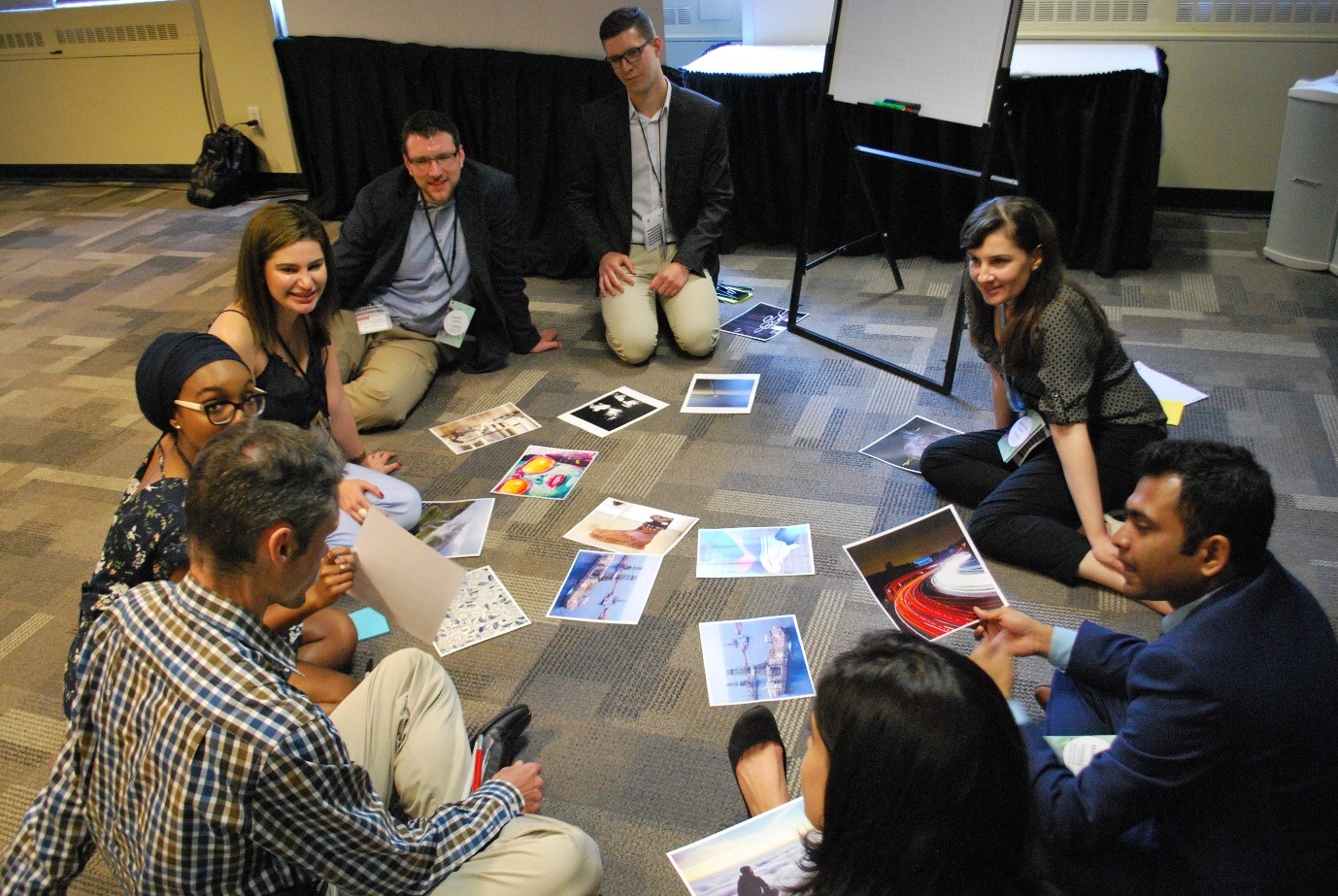
Design thinking is a human-centered approach to problem solving that applies design methods developed by architects and industrial designers to modern problems faced by businesses, not-for-profits and governments. Design thinking builds on various schools of thought, and it is grounded in empathy, listening and iteration. Its five-stage, cyclical approach starts with the designers empathizing with users, then defining the problem, coming up with ideas, prototyping and testing the ideas, and then doing it all over again.
This iterative process is heavily dependent on receiving and incorporating feedback to improve the process. That means listening. Keeping the citizen’s needs, rights, and well-being at the forefront of their work is natural inclination for public servants. But for governments to truly adopt the design- thinking approach, they need to treat these five stages as principles.
Empathy
The first principle, empathy, is often undervalued or considered unprofessional because it brings feelings into work. Sometimes it is stereotyped as a feminine trait and associated with weakness. However, good design is human-centered, and empathy is at the heart of that approach. Empathy means focusing on the users’ experiences, how users think and feel, what they say and do, what they are hearing and seeing, and their pains and gains. It is one of the hardest principles to grasp, because it cannot and should not be faked.
Conventionally, those who are more likely to make use of government services are contacted after the policy has been designed, the process is laid out and the system set up. Design thinking flips the process around by first talking and really listening to the clients.
The Canada Beyond 150 program, a professional development program for early-stage federal public servants, has been training participants to engage and listen to citizens before defining a policy problem in order to better understand their needs. In addition to conducting regular interviews, they have experimented with ways of asking questions in both direct and indirect ways. Such techniques include “cultural probes” that give users the option to answer questions using a variety of tools (like journals and cameras that help them record their thoughts and experiences), artifacts (such as mementos from their childhood), or tasks (like writing, drawing or creating something that expresses how they feel at the moment about an issue). These tools may help individuals feel more comfortable to share personal insights openly because they do not feel they’re under the spotlight.

Another valuable engagement tool the participants learn through the program is how to use intercept interviews. These are short one-on-one interviews with willing passersby conducted in a public setting (a mall, for example) that include a pre-determined set of questions to launch the conversation. This type of interview results in spontaneous answers that can give an interviewer a good idea of what the public perception might be on a certain issue or topic, as well as allowing conversations to flow and new ideas to surface.
Allowing for sufficient time, willingness to be open to vulnerability, the natural discomfort associated with approaching strangers and fear of rejection ought to be addressed and prepared for when policymakers embark upon public engagement initiatives. Experimenting with a variety of tools leads to meeting people where they are, and giving them options to share their thoughts and opinions that encourage them to express themselves openly. This can make all the difference between a superficial experience and a deep connection.
Difficult as it may be, it is important to return to the empathy principle throughout the entire design process. This may not come easily to governments and institutions, but is worth the effort. After all, the end goal of any policy is to help improve the quality of life for those it seeks to assist. If their feedback is not sought from the beginning, there is a greater chance that unwanted consequences may derail the entire effort.
Defining the problem
At times, problems come with parameters and deadlines but they are nonetheless poorly defined. The second design-thinking principle mitigates this; it aims to define and reframe the problem. The goal is to understand, visualize, synthesize and communicate the problem’s attributes. One tool for this is a journey map, essentially a timeline that catalogues the user’s experience throughout the process that is being examined (such as filling out a form). It may also be useful to create personas – this involves compiling common user behaviours into representative profiles.
Systems maps are visual representations of a group’s understanding of the elements within a system (for example, the health care system or the justice system) and how they interact with each other. These maps help us to understand relationships that are important to a problem, how they might interrelate, and identify emerging challenges.
Idea generation
Once there is a well-defined or reframed problem, it is time for the third principle: ideating, which is sometimes referred to as structured brainstorming or idea generation around possible solutions. What do you get when you put a theatre major, an animator, an economist, a lawyer, a computer scientist, an environmental lawyer, a social media strategist and a futurist in a room? You guessed it, all the right people you will need on your team to enable it to explore a wide range of ideas. Multi-disciplinary teams might draw inspiration from games, movies and books, as well as other practices and policies; the “out there,” the impossible and the farfetched may very well be the foundation for some of their best solutions.
Design thinking at its heart is transdisciplinary, and ideating thrives on the presence of a variety of disciplines working on a specific problem. Each field of expertise is given an equal place at the table, which removes the problem of creating solutions in isolation. As an example of the use of design thinking, Employment and Social Development Canada’s Innovation Lab, which brings together people from various disciplines, has used it to develop improvements to the online application process for the Canada Pension Plan. Currently it is exploring ways to increase uptake of the Canada Learning Bond. These are the kinds of projects that need an open environment to help ideas to flow, so creating a transdisciplinary team is the best approach.
Prototyping and testing
Prototyping, the fourth principle, fleshes out potential solutions using miniature models, drawings, computer simulations and other methods.
Testing rough prototypes with their users, which is the fifth principle, encourages a culture of openness and provides the possibility to receive feedback. In line with the iterative nature of design thinking, testing prototypes along the process allows a team to observe the users’ responses to a potential solution before it is finalized. Often, lack of time is cited as a reason to avoid prototyping and testing or to rush through it in order to meet a deadline. For all design-thinking principles to come together, it is imperative that prototyping and testing be allotted the necessary time to make it possible to reflect and incorporate what was learned along the way.
For governments, the citizen is at the centre of everything. For design thinkers, the user is at the centre of the design process. It is therefore only natural that governments have started embracing design thinking when shaping programs and services. Time and organizational cultures may still be barriers, but the increasing use of design-thinking principles is a positive sign that change is underway
Photo: Shutterstock/By Khakimullin Aleksandr
Do you have something to say about the article you just read? Be part of the Policy Options discussion, and send in your own submission. Here is a link on how to do it. | Souhaitez-vous réagir à cet article ? Joignez-vous aux débats d’Options politiques et soumettez-nous votre texte en suivant ces directives.









